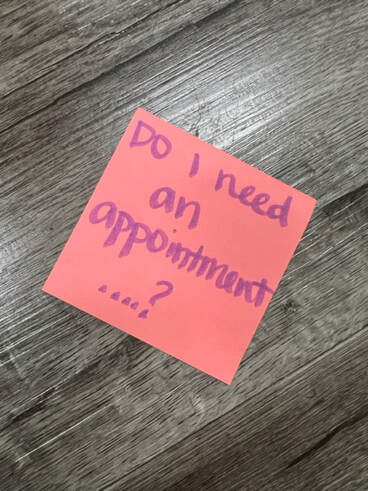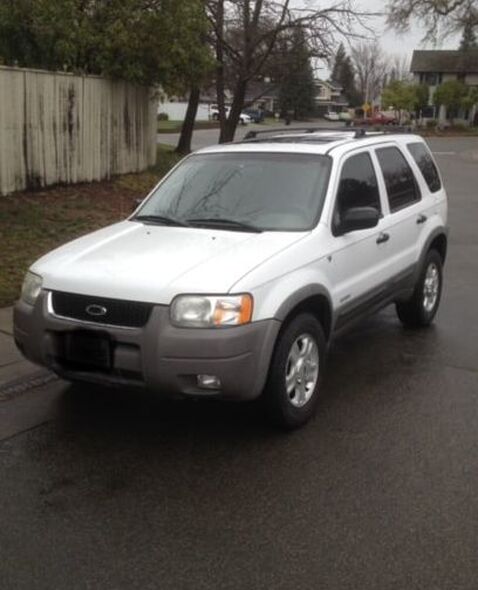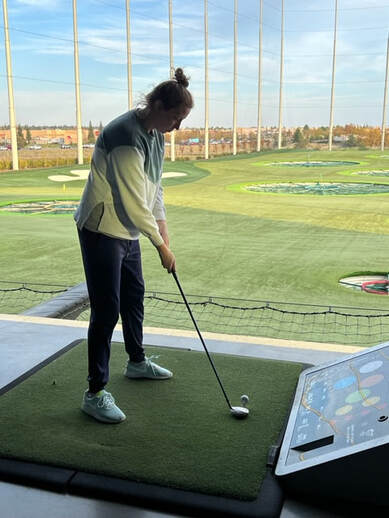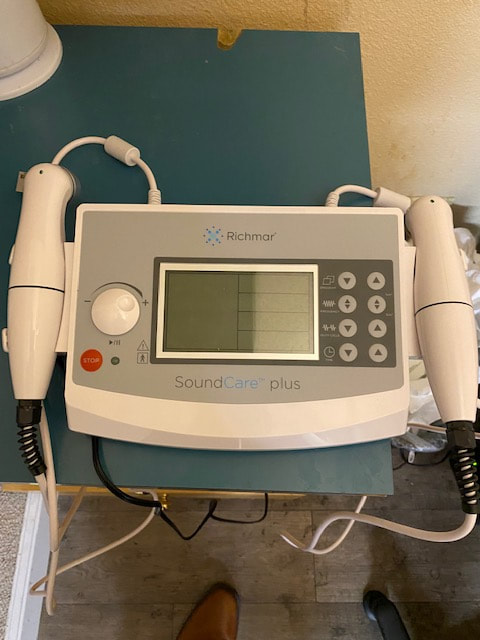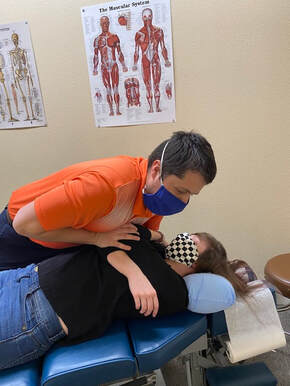 Welcome back to the Accident and Sports Injury Clinic blog with all the newest information for the best chiropractic clinic in Roseville. Today we wanted to cover what a visit with your Roseville chiropractors would look like and how your first visit might vary from a following visit. To start when you first come into our clinic you will be greeted by our amazing staff. They will help you by gathering your including personal information and insurance/payment information. For more information of insurances we take check out our FAQ page about it here. They will have you fill out some forms including health history, accident history, and sign some other forms. It is now time to see one of the our Roseville chiropractors including Dr Zak Owens, Dr Scott Owens, and Dr Reed Metcalf. When they see you they review any relevant paperwork including referral information and the health history form you filled out. They will want to hear in your words why you came in whether you are in pain, feeling tight, or don't know what is going on. They will then evaluate you to see if treatment at our facility will be beneficial. We want to make sure before we do any treatment that nothing is going on that might require an X-ray, MRI, or other imaging. If we think other imaging or labs are necessary we can refer you out. We have very good relations with nearby hospitals and clinics including Kaiser, Sutter, Mercy, and UC Davis systems. If we find that we are able to perform treatment at our clinic we will start treatment the same day. Treatment may involve chiropractic adjustments/manipulations, therapeutic ultrasound, electrical muscle stimulation, roller table, stretches and exercises. We may also recommend massage therapy and acupuncture for your condition. We will make sure to go to your speed with treatment as we can offer gentle techniques including activator, drop table, blocking, and manual therapies. When finishing up with treatment for the visit your doctor may recommend coming in a couple more times to make sure you are fully healed from your condition. We want to make sure healing goes as quickly and painless as possible. Our doctors also understand that you may need additional treatment at other facilities and we are happy to refer you out for imaging, pain management, physical therapy, etc. when necessary. We hope to see you soon and if you have any questions you are always welcome give us a call or come on by!
0 Comments
Did you know that chiropractors are licensed to not only treat problems with the neck and back but also other joints in the body? We can treat many thing including muscles, joints, ligaments, tendons, and sometimes nerve issues. One area we see quite a bit is shoulder pain and problems in the shoulder. This could be many different issues including rotator cuff strains, ligaments sprains, impingement, frozen shoulder, etc. The first thing to do when shoulder pain starts is to increase range of motion, ice and avoid re-injury. Often the neck and upper back muscles are tight from restricted neck and upper back motion. Make sure to get checked for neck and upper back dysfunction along with the stretching. Here is a good exercise shown by Dr Scott Owens one our fantastic Roseville Chiropractors. The Codman arm swing is a good first exercise for many people with shoulder pain as it promotes movement in the shoulder. This exercise may not be the best for every shoulder condition so make sure to checked out by one of our chiropractors to make sure this exercise is right for you!
At Accident and Sports Injury Clinic we strive to help every patient we can. Since everyone of us unique we try to cater treatment to you uniquely. We make sure not to give blanket treatment plans that last for many months with no end in site.
I've heard many times from patients that they went somewhere and after the first visit they were told that they would need to come in at least 3 times a week for 12 weeks. I want to emphasize that if someone has told you this you should go somewhere else. It is impossible to say that you will such in such visits months from now. It is important to see how your progression is going before you can say how many visits may be necessary. At Accident and Sports Injury Clinic our chiropractors may recommend coming in for a couple treatments within a week or 2 to see how you respond. This also depends on the severity of the injury, how the injury occurred, and other factors that are unique for you. After each visits we make sure to see how you are responding by checking pain levels, the amount of time you have pain, and your ability to do activities at home, work, or in playing a sport. At around 3-4 visits we will check on your progress and can better make a treatment plan that will fit your needs. Most importantly too is that if we are not making the progress we want we will make sure to get you to the right place so you can improve. Treatment at our office may involve chiropractic adjustments including manual manipulation, using the activator instrument, using the drop table, and traction the neck and hips. We also have additional therapies available including therapeutic ultrasound, electrical muscle stimulation, roller table, and cold laser. Your chiropractor can also show you some exercises and stretches to strengthen weak muscles, stretch tight muscles, and improve your posture. We want to work with you and your goals to help you get back to what you love and get you out of pain. Each patient whether young, old, athlete, worker, retired, parent, etc. is important to us.
A very common question that is asked when going to a chiropractor is what does the adjustment or manipulation do to help my spine or other joint have less pain. This can be a confusing concept so I wanted to explain it in a simple way in order to help you understand what an adjustment or manipulation can do for you to help with your pain.
A chiropractic adjustment or manipulation is one of the tools the chiropractors at Accident and Sports Injury Clinic use to help our patients have less pain and increased movement. An adjustment is when we apply a force to your joint in order to get motion to your joint. This can also be known as a manipulation. Adjustments come in different forms (check out our previous blog post) but are characterized by getting movement in the joints and there can sometimes be heard an audible crack or a cavitation. The crack is not necessary for a successful adjustment (even though we like it) but just means that there was movement in the joint allowing for bubble formation in the joint. After an adjustments is performed the following are the benefits of an adjustment 1. Increased mobility-Increased mobility of a joint is one of the more obvious benefits of the adjustments. This is one of the main purpose of the adjustment. This is seen due to increased range of motion after the adjustment or manipulation is performed. 2. Decrease of muscle spasm or muscle tension-Decreased muscle spasm or tension happens due to 2 mechanism. The first is due to movement applied during the adjustment we are stretching the muscles of the joint including sensory muscles which are smaller connecting from vertebrae to vertebrae. When the adjustment or manipulation is performed the smaller sensory muscles and bigger muscles are stretched which then causes the nerve endings in the muscles to relax and decrease tension. The 2nd mechanism which be explained with pain as it is very similar 3. Reduce pain-This is perhaps the biggest reason a person goes to the chiropractor, seeking pain relief. Pain relief comes in a very interesting method after the adjustment is performed. When the adjustment is done there is movement in the joint. This signals to the brain through proprioceptive nerve endings that there was movement in the joint. The brain then sends back to area through the nerves to decrease the pain and also to the muscles in the areas to decrease tension. Now that you know what an adjustment can do for you consider adding chiropractic adjustments or spinal manipulation to your treatment plan. It can really help you get back to doing what you love.
Did you know that Medicare covers chiropractic care? That's right, for as little as just your co-pay you can be treated by anyone of our Roseville chiropractors. That means relief from your headaches, neck pain, lower back pain, sciatica, and even hip pain. Chiropractic adjustments can also help increase mobility if you have arthritis.
Chiropractic care is specifically covered under Medicare part B. At our office we take most Medicare plans. Some of these plans, including Kaiser and Sutter, may require authorization from your primary care physician. Cost of treatment varies per plan, co-pay, and deductible but generally they are under $20, with some exceptions. For questions regarding Medicare plans and costs call us today at 916-784-2727 and we will be happy to answer your questions. We hope to see you soon at Accident and Sports Injury Clinic, your Roseville Chiropractor |

